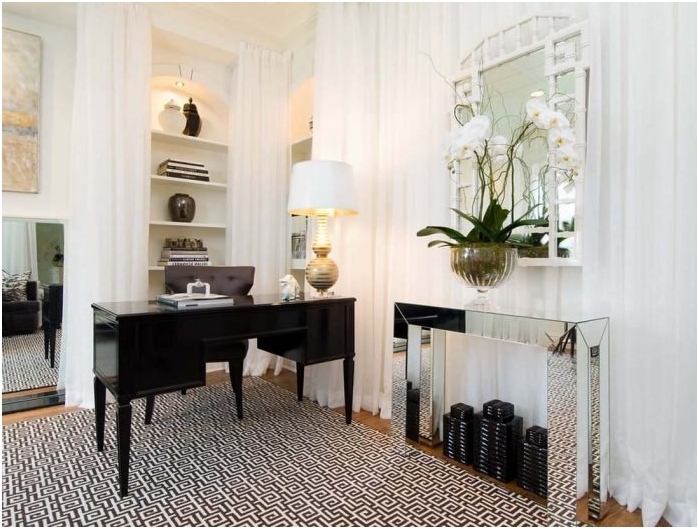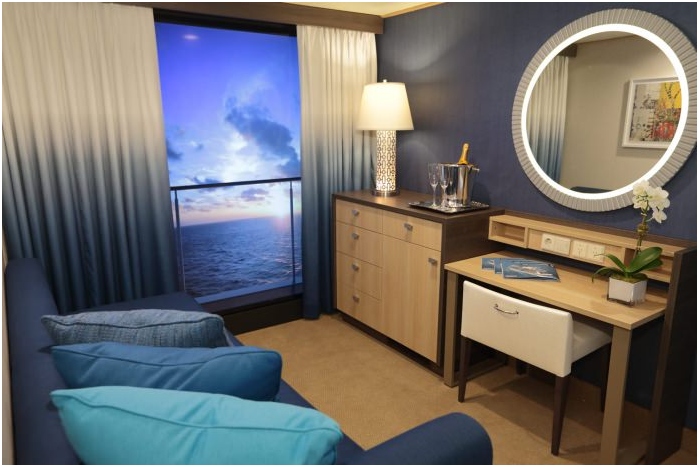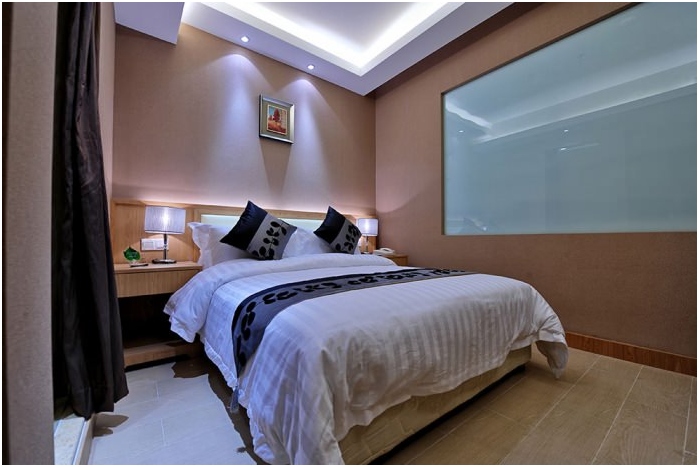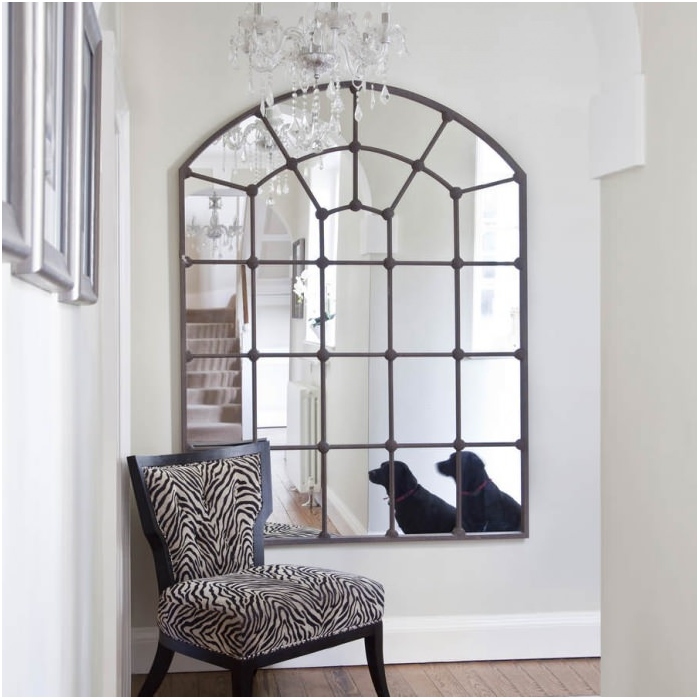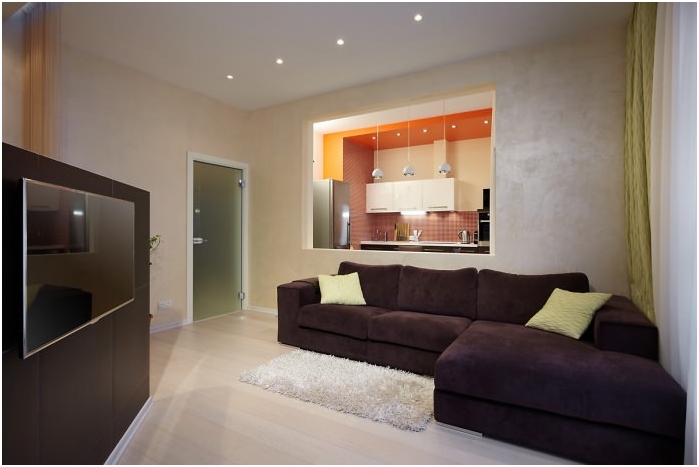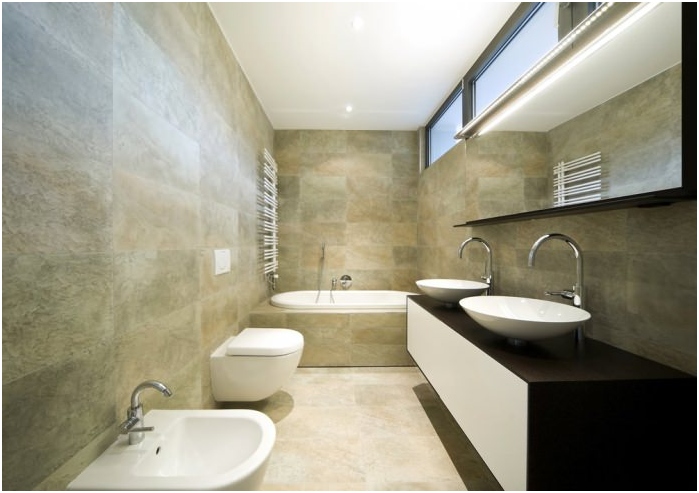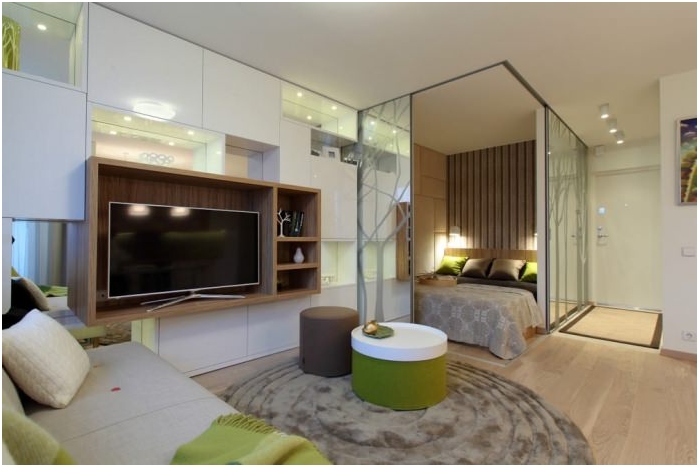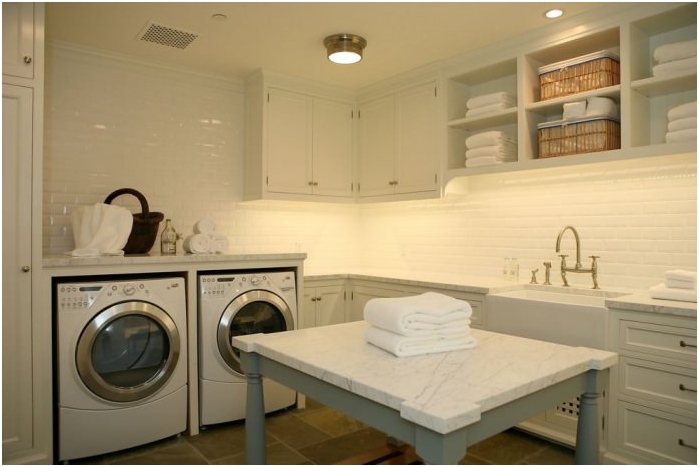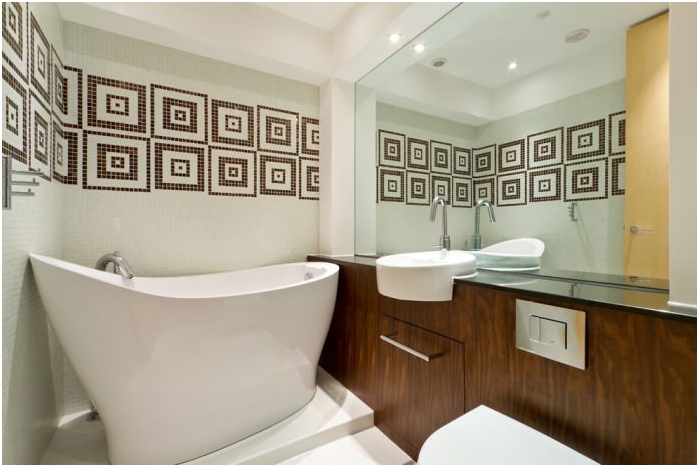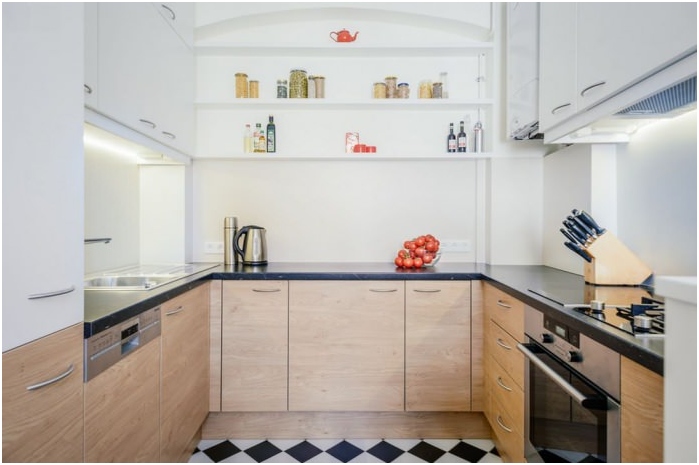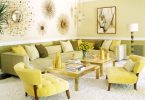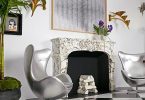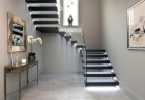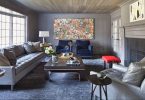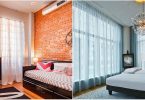In the planning and design of rooms, daylight is very important, entering it through the windows. However, in almost every apartment and in every house there is at least one room into which the light from the street does not fall for a very prosaic reason: they have no windows. These are toilets, bathrooms, closets, dressing rooms..
The design of a room without a window has its own characteristics. As a rule, they try to create the impression that daylight does get inside. This can be achieved in various ways, ranging from installing additional lamps and ending with cutting through real window openings..
Imitation
In the design of a room without a window, the imitation technique is quite often used: in one way or another they create the impression that there is a window in the room. Psychologists believe that even a drawn window has a positive effect on a person’s mood, and this technique should not be neglected.
- Curtains. The presence of curtains immediately shows the location of the window. If you cover part of the wall with a curtain, it will seem like it is hiding a window behind it. The fan will help create the feeling of a light breeze blowing through the window. A light located behind the curtain will enhance the feeling. If you put a frame made of moldings on the wall, you get the full impression that the room has a real window.
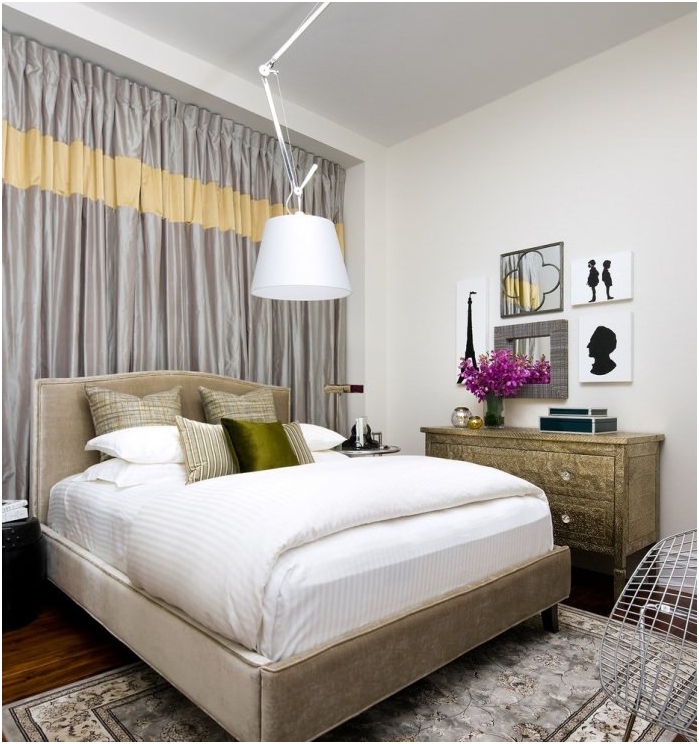
- Paintings. A beautiful landscape of large size in a solid frame can also serve as a kind “a window to nature”. Landscape wallpapers have the same effect..
- Panels. A plastic panel covering the box in which the backlight is mounted can play the role of a false window if you choose the appropriate design.
- Mirrors. A false window made of mirrors will help create the impression that there is a window in the room, moreover, the mirror surface visually enlarges a small space.
Window
The interior of a room without windows is easy to fix by cutting through a real window in one of the walls. Of course, it will not go outside, but will become interior, but this will allow daylight to enter the room, albeit to a small extent. Such windows can be closed if necessary with blinds.
Stained glass
Stained-glass windows can serve not only as decoration, but also as an imitation of a window opening – in this case, a light source must be placed behind them. Colored highlights will create a festive mood, and neutralize the negative feeling of not having a window in the room. Stained-glass windows can be used to decorate the kitchen, corridor, bathroom.
Transom
This is the name of the window that does not open. In the fifties of the last century, transoms were widely used to illuminate bathrooms – they were arranged in the walls between the bathroom and the kitchen at a distance of five to ten centimeters from the ceiling.
You can also connect the room and the corridor with transoms. The ceiling-mounted transom is not accidental – it allows you to leave the premises isolated, and at the same time ensure the flow of daylight.
Sliding panels
In the design of a room without a window, others are also used “tricks” – for example, sliding panels instead of walls, allowing you to highlight the bedroom in the dark, and in the daytime, allow sunlight to penetrate into every corner of it.

Light fixtures
The easiest way to create in the interior of a windowless room the impression that daylight is entering the room is to install lamps that give diffused light so that they are not visible. For example, it can be a matte translucent panel on the ceiling, under which light sources are placed. You can place lamps in special niches, or even behind cabinets.
Backlight
If there are many cabinets in the room, for example, this is a kitchen or a dressing room, then LED strips can be placed between them – the light will be noticeably added, in addition, an additional decorative effect will appear – the pieces of furniture will seem to be lighter and more airy.
Mirrors
In the design of a room without a window, mirrors are often used – they visually expand the premises, give them depth, and, reflecting light, increase the illumination. If you place mirrored panels ten to fifteen centimeters below the ceiling, the room will become much brighter..
This technique is suitable for the decoration of any premises. By combining mirrors with light sources, you can achieve a significant increase in illumination. For example, sconces can be reinforced on mirror panels – in this case, the light, reflected from the mirror, will flood the room with light resembling the sun.
Surfaces
Light can be reflected not only from mirrors, but also from glossy surfaces, and this can be used in the interior of a room without windows. In this case, furniture is chosen with glossy facades, elements of shiny metal are brought into the setting..
Colour
The more white is used to decorate the room, the lighter it appears. White reflects rays in the entire spectrum, and due to this, the room is filled with light, even if there is not much of it. The ceiling and walls can be snow-white to increase illumination, and decorative elements will enliven the interior.
Glass
Using glass objects allows you to simultaneously “dissolve” them in the air and avoid clutter, and increase illumination due to the brilliance of glass surfaces. In addition, glass tables and chairs do not block light rays and do not create shaded areas in the room..
A room with blank walls can be turned into a light and cozy room if you follow the advice of designers and do not be afraid to experiment.

